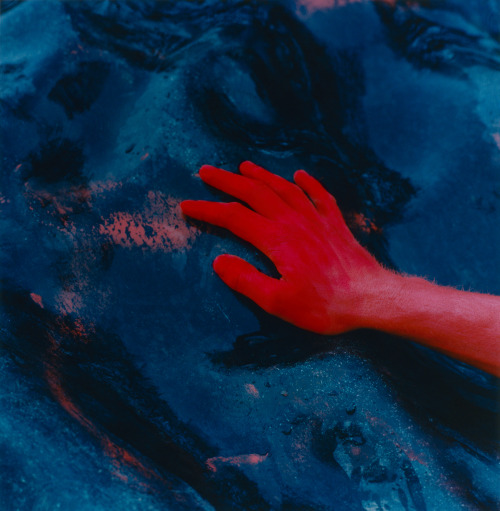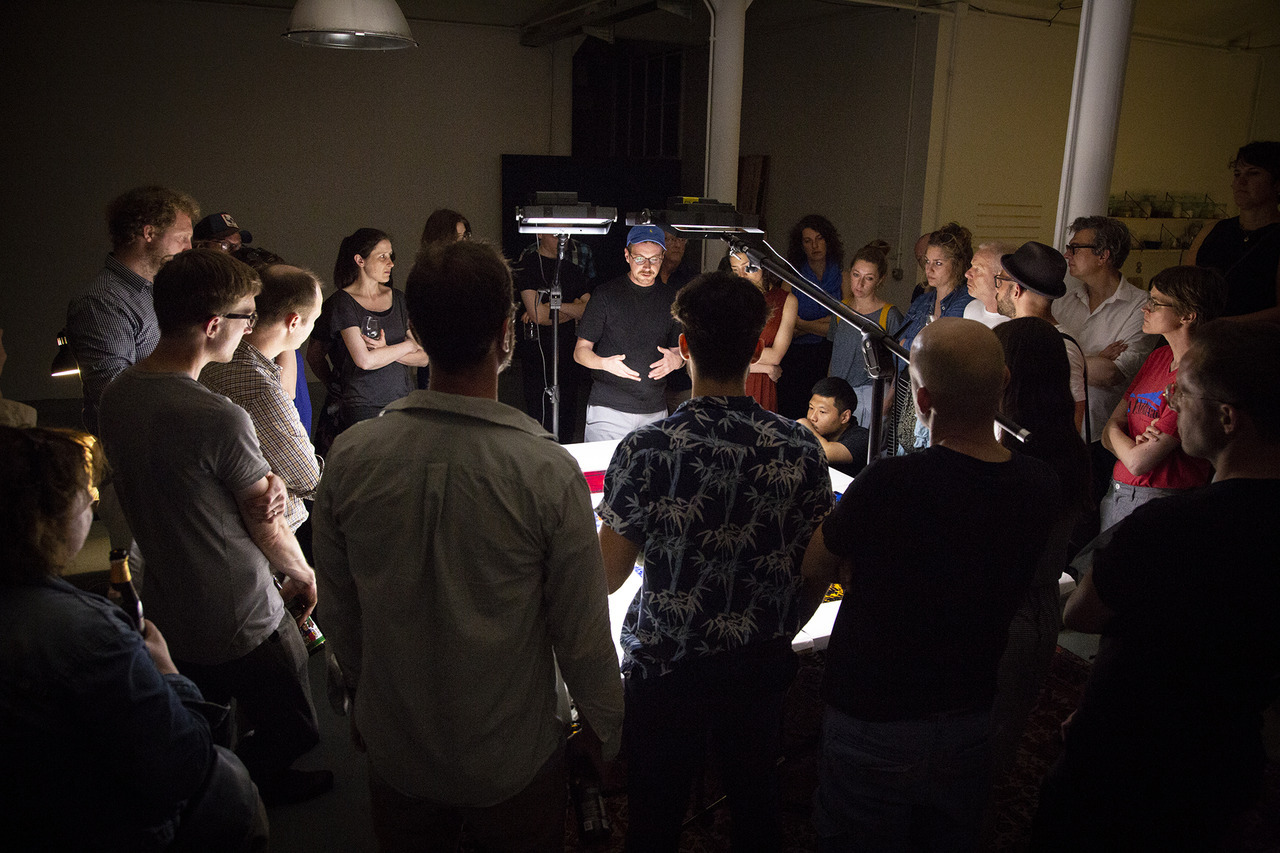

SHOW + TELL: Alexander Gehring und Eva Gjaltema
Im SHOW + TELL Teil des FOTOTREFF #24 mit Gábor Arion Kudász und Felix Hoffmann diskutierten wir mit Alexander Gehring und Eva Gjaltema über ihre aktuellen Projekte.
(Foto: Alexander Gehring, aus: Alchemy of Colour, 2018)
Alexander Gehring
“My work The Alchemy of Colour explores the relationship between photography and alchemy.”
“Alchemists constantly tried to understand nature and its immanent processes and to use the acquired knowledge to intervene in those procedures. The idea to transmute elements is part of it. That wasn‘t limited to attempting to create gold but established the reputation as an occult science. The processes of analogue photography are similar. Something visible originates from an invisible image (the latent image) – a reflection of nature and the world. The analogies of alchemy and photography can be experienced in the photo lab. Thus, many people, who marvel at the development of an image on paper in the developing tray for the first time, describe that moment as „magical“. In both cases, the use of chemicals, metals and salts starts chemical reactions, that provoke the conversion from invisible to visible and create something new. The darkroom is the core of each photo lab: a mystical space, for insiders only, who know and follow the laws and rules of the space – nothing else than a temple of a secret society.”


Eva Gjaltema
Nowadays more parents and children are growing up together within a family construction, we call the Patchwork family. Being confronted with such a family construction herself, Gjaltema is trying to reflect on the continuing shifting identities and underlying tensions within such a family. The series Patchwork consists of different collages or installations, where she made use of her own Polaroid pictures she made of her family members and their surroundings over the last years. She enlarged the Polaroid’s and cut out the figures, which leaves the frame, where she combines the frames into new portraits. These portraits are like layered identities, where the different family members become part of a new construction like a handmade patchwork.
Eva Gjaltema makes public what in the first places seems private. Time, memories, and transcience are tangible in her works and she discusses themes like identity, family relationships, and positions. She holds an interest in the influence of history on the present.
Gjaltema works with different types of media, from found footage, analog and digital photography, collage, installation, and the book/photo album, where an autobiographical urgency is mainly her point of departure.

